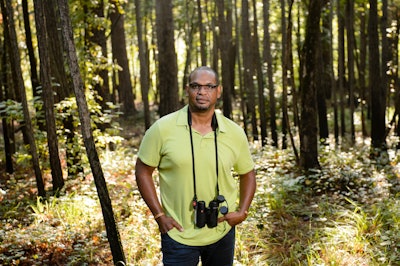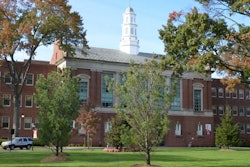“Oh things ain’t what they used to be, no no
Where did all the blue skies go?
Poison is the wind that blows…”
That’s how America’s “Prince of Motown,” Marvin Gaye, begins his 1968 song “Mercy Mercy Me (The Ecology).”
It’s also how Dr. J. Drew Lanham, Alumni Distinguished Professor of Wildlife Ecology at Clemson University, likes to begin his wildlife policy class. “By playing that for students,” he says, “I hope they get some form of understanding that art can inform life and art can inform science.”
Though Lanham is a trained zoologist and ecologist, he’s not afraid to tap into the right side of his brain. In fact, Lanham is a passionate advocate for STEAM — an acronym that modifies STEM (science, technology, engineering and mathematics) by throwing “arts” into the mix.
“I think the concept of STEAM adds a different kind of energy,” he says. “Science is certainly a creative discipline. You have to think creatively around certain problems and about objective data so you can have some inroads into understanding natural phenomena …. But I think part of STEM has become, in many ways, a narrow track that doesn’t always give credit to creativity.”
 Dr. Drew Lanham
Dr. Drew LanhamLanham is far from the only academic who argues that STEM can utilize the arts to its advantage. Past academic papers have long suggested that art encourages innovative thinking, improves memory and creates more neural pathways to understanding a certain concept or problem. One 2012 study even found that Nobel recipients considered scientific “geniuses” were more likely to have their feet in both scientific and artistic waters.
Considering those arguments, it’s not so strange that Lanham will occasionally assign creative writing exercises to his ecology and wildlife classes. One such assignment asks students to summarize a specific bird in haiku format by describing its appearance, behavior and the conservation that’s necessary for it in 17 syllables.
“It’s a difficult challenge, as difficult in many ways as solving a derivative,” he says. “But one of my goals is to continue to blend art and science in a way that evokes thought. That’s what science, at its heart, does; it invokes our thinking.”
For Lanham, his relationship with the natural world isn’t just scientific and objective, but deeply personal — it runs “bone marrow deep.” He grew up on a long-held family farm in Edgefield County, South Carolina close to the Sumter National Forest, where there were always woods to explore, fields to roam and trees to climb. A beautiful place ecologically, he says — but an ugly place politically and historically.
As a poet and creative writer, he details his experience as a Black man growing up in the rural South in his novel titled The Home Place: Memoirs of a Colored Man’s Love Affair with Nature, which has earned accolades from National Geographic, the Los Angeles Review of Books and Outside magazine.
“In me, there is the red of miry clay, the brown of spring floods, the gold of ripening tobacco. All of these hues are me; I am, in the deepest sense, colored,” he writes in his poetic style, the same that has brought him to publish his own poetry collection too: Sparrow Envy.
While many scientists tend to think of their personal lives as separate from their work, Lanham allows his experiences as a Black man to inform how he thinks about environmental issues. As many argue, philosophy and politics aren’t irrelevant to science — another critical argument for incorporating more of the humanities into STEM.
For instance, as an environmental studies professor, Lanham is deeply aware of how systemic racism is built into even environmental issues and movements — with African Americans having less access to green space, being more likely to suffer from air or water pollution than their White counterparts and being more likely to be criminalized while outdoors.
For that reason, Lanham has his students consider conservation through the prism of race, asking such questions as, “How does being Black in America impact the way we see nature? How does it impact the way others see us in nature? And how are we included or excluded in discussions of the environment?” Additionally, he wants his students to understand that environmental issues are relevant to everyone, that they are inextricably tied to all aspects of life, no matter whose life it is.
“We all depend on water, air and soil, so one of the ways to make climate change relevant to people is not to think first of drowning polar bears, but to think of the air that creates conditions where people, especially people of color, cannot breathe,” he said. “…. And so relevance is just as close as your next breath. It’s as close as the next glass of water. It’s as close as the park that you have to go to that’s either green or not green.”
This article originally appeared in the August 20, 2020 edition of Diverse. You can find it here.



















